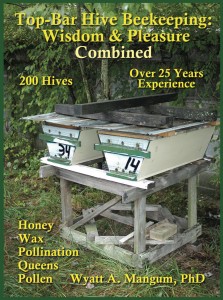Photos of Top Bar Hive Beekeeping by WAM
Champion Top Bar Hive Colonies
It was an early hot day in April, our spring. These two strong five-foot top bar hive colonies hung out on the front of the hives. I checked the colonies, and neither one had any queen cells for swarming.
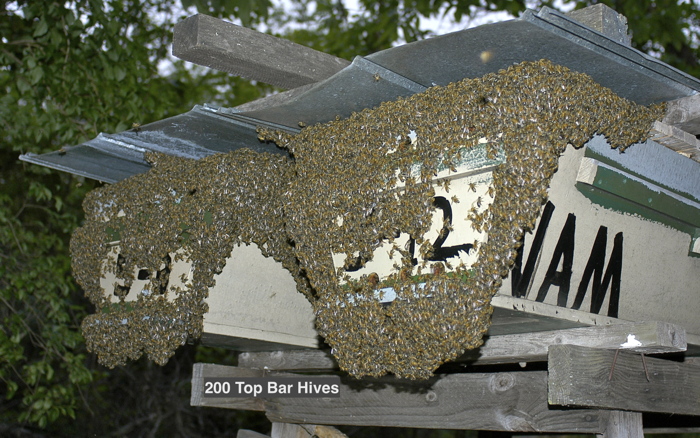
Champion Top Bar Hive Colonies
On the front view between the hives, the bee clusters joined, which is very rare, hence the pictures. I do not see that cluster joining even during our hot summers. When cooler spring temperatures returned, the bees went back in the hives, and all appeared normal.
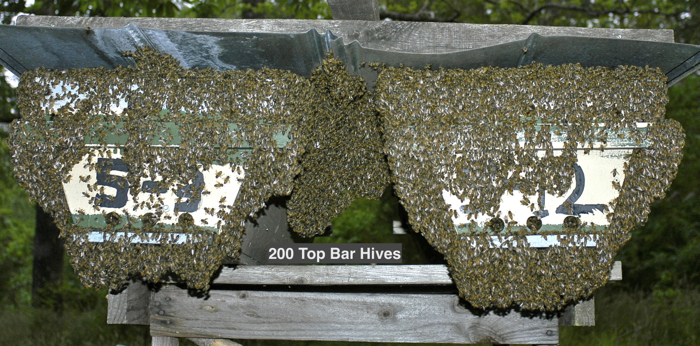
Top Bar Hive Apiary Site Gone!
This property is a large farm. I had an apiary site (marked) in the distance, which was in the way of a logging road to their tree-cutting site (upper left). The wooden grids are called logging mats. They keep the heavy trucks loaded with tons of logs from getting stuck in the mud.
With land use changes and with apiaries on property owned by others, sometimes beekeepers need to move their hives. All my top bar hives are easy to move, even the five-foot ones. I moved different hives back to this property at a much better site, with better truck access and wind protection for the hives. So I never lost the apiary location. Sometimes a loss is really a gain.
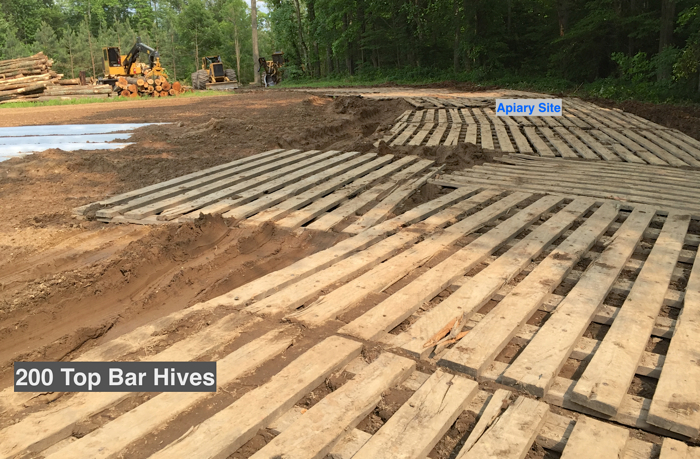
An Abandoned Well Found when Searching for a New Apiary Site
I mentioned old abandoned wells on page 171 of my comprehensive Top Bar Hive book. I said to watch for an old well site when walking around abandoned farm buildings, putting out bait hives, and looking for apiary sites. Below is an abandoned well, sometimes called a bored well, a large diameter vertical pipe. Depending on local conditions, the well is some 30 to 50 feet deep or more, usually with enough (cold) water that you cannot touch the bottom. Most likely, you cannot see the pipe part or boards with years of accumulated vines and leaves covering the wellhead. So when I walk up to old farm houses/buildings, I want to know the answer to a potentially deadly question, “Where’s the well?”
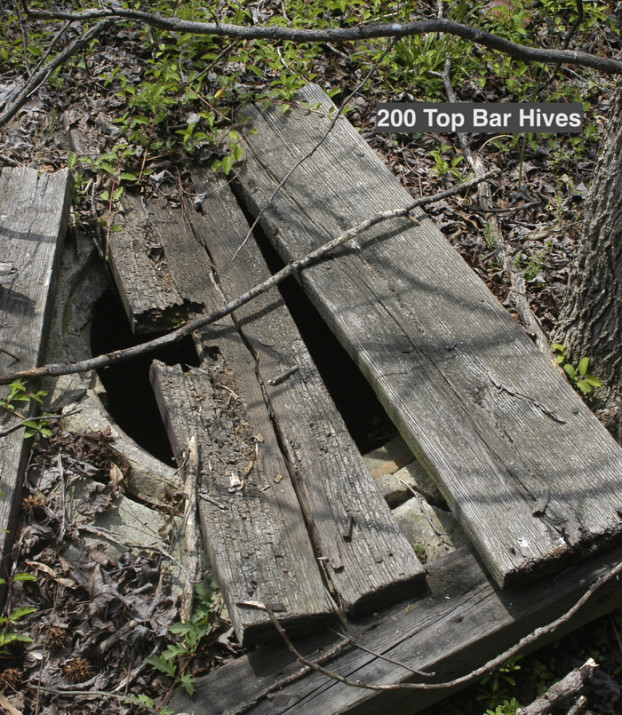
A Secluded Top Bar Hive Apiary
I am ready to back up and unload top bar hives. The hive stand to the left with the bent legs is just a distortion from the wide-angle lens.
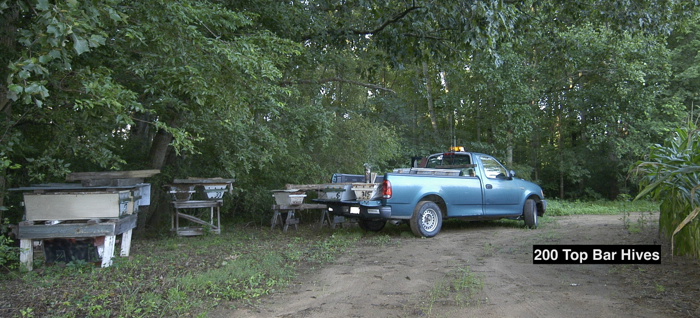
Consider supporting these pages by making a donation. Click the donation button below and enter credit card or debit card information. Paypal handles all the security. Or you can purchase a copy of my book. Clicking the book takes you to a page describing its 12 chapters. Thank you. More photos are coming.
W. A. Mangum, PhD
